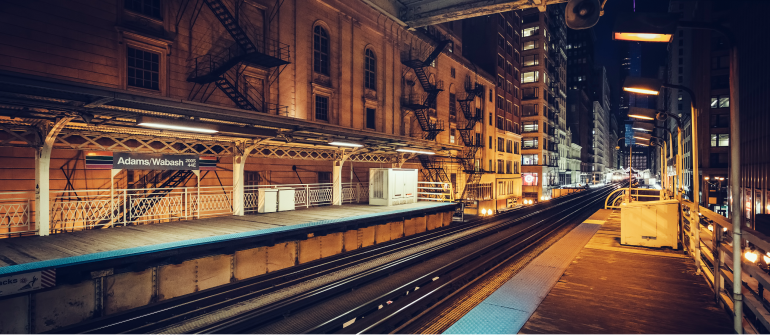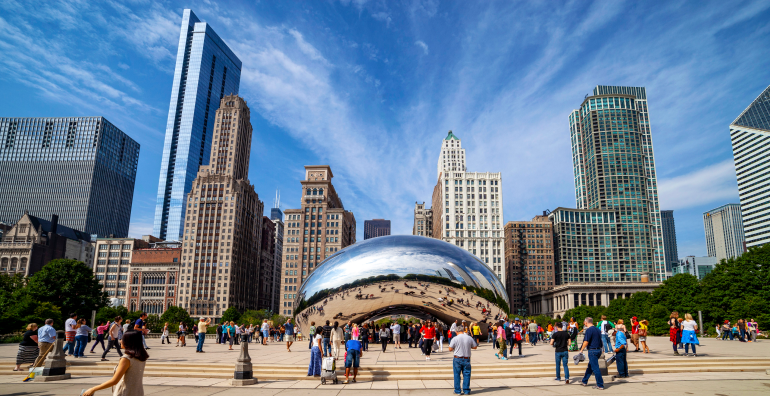
Moving to Chicago: Everything You Need to Know
March 20, 2023, by Jessica
If you’re thinking about moving to Chicago, you’re not alone. With a population of over 2.7 million people, Chicago is the third most populous city and the third largest city in the United States and offers a wide range of opportunities for both work and play. But before you pack your bags and head to the Windy City, there are a few things you should know. In this article, we’ll cover everything you need to know about moving to Chicago, from finding a place to live to navigating the city’s public transportation system.
Why Move to Chicago?
Chicago is a city of diversity, culture, and opportunity. With a thriving job market, a world-class food and dining scene, and plenty of entertainment options, Chicago has something for everyone. Whether you’re looking to advance your career, start a family, or just experience life in a bustling city, moving to Chicago is the best thing to do.
Chicago’s Job Market

Chicago is home to some of the largest and most diverse industries in the country, including finance, healthcare, and technology. Major companies like Boeing, Walgreens, and United Airlines have headquarters in Chicago, making it a hub for business and entrepreneurship.
Lifestyle and Culture in Chicago

Chicago is known for its lively nightlife, world-class national museum and art galleries, and iconic architecture. From the Magnificent Mile to Navy Pier, there’s always something to do in the city. Chicago is also a city of neighborhoods, each with its own unique character and personality. Whether you prefer the trendy vibe of Wicker Park or the classic elegance of the Gold Coast, you’ll find a neighborhood that suits your style.
Finding a Place to Live in Chicago
One of the first things you’ll need to do when moving to Chicago is finding a place to live. With so many neighborhoods and housing options to choose from, it can be overwhelming. Here are a few things to keep in mind:
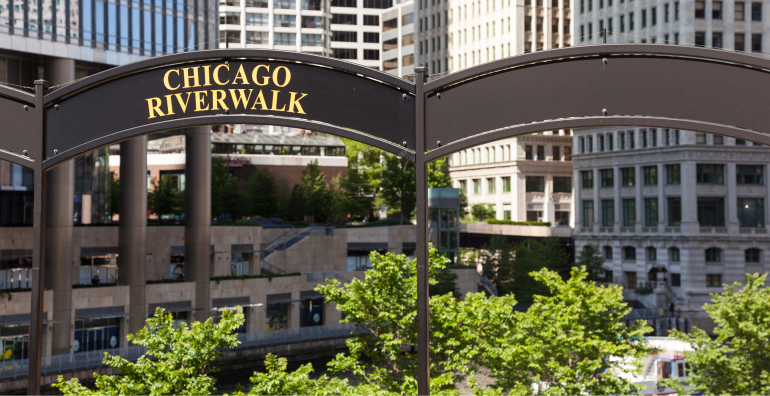
Neighborhoods in Chicago
Chicago has over 70 neighborhoods, each with its own distinct personality and vibe. Some of the most popular neighborhoods for newcomers include:
- Lincoln Park: This upscale neighborhood is known for its tree-lined streets, historic homes, and proximity to Lake Michigan.
- Wicker Park: This trendy neighborhood is popular with young professionals and artists, and is home to some of the city’s best restaurants and nightlife.
- River North: This neighborhood is known for its luxury apartments, high-end specialty shops, and thriving art scene.
Housing Options in Chicago
Chicago offers a wide range of housing options, from historic brownstones to modern high-rise apartments. Here are a few things to consider when choosing your new home:
- Price: Chicago’s housing market can be expensive, so be prepared to pay a premium for certain neighborhoods and amenities.
- Commute: Chicago’s public transportation system is extensive, so consider the proximity of your new home to the nearest train or bus stop.
- Amenities: Do you want a gym or pool in your building? Do you need a pet-friendly apartment? Make a list of must-have amenities before moving to Chicago or starting your search.
Navigating Chicago’s Public Transportation System
Chicago has one of the best public transportation systems in the country, with an extensive network of trains and buses that can take you anywhere in the city.
In addition to traditional public transportation options, Chicago also has great bike lanes and a bike sharing company or program called Divvy. Divvy is a popular and affordable way to get around the city, with over 6,000 bikes available at hundreds of stations throughout the city. Ride-share services like Uber and Lyft are also widely used in Chicago and offer a convenient way to get around the city, especially if you’re in a hurry or need to travel to an area not covered by public transportation.
While Chicago is a large city, it’s also quite walkable, especially in Chicago’s downtown area. The walkable city is known for its beautiful architecture and scenic waterfront, and there are many parks and green space throughout the city that are perfect for a leisurely stroll. Additionally, many Chicago neighborhoods have a distinct character and charm, making them ideal for exploring on foot.
Here are a few tips for navigating Chicago’s public transportation system:
Chicago Transit Authority (CTA)
The CTA is the main provider of public transportation in the city. The CTA operates a network of buses and trains that cover the big city and surrounding suburbs
Types of CTA Transit Options
- L Train: The L train is an elevated train that runs throughout the city and is the fastest way to get around.
- Bus: The CTA bus system is extensive and covers the entire city. Buses run 24 hours a day and can take you anywhere you need to go.
- Metra: The Metra is a commuter train system that serves the suburbs of Chicago. If you’re commuting from the suburbs to the city for work, the Metra is a great option.
Purchasing CTA Transit Cards
To use the CTA, you’ll need to purchase a transit card. There are a few different options:
- Ventra Card: The Ventra card is a reloadable card that can be used for both buses and trains.
- Single-Ride Tickets: Single-ride tickets can be purchased at any CTA station for a one-time use.
- Unlimited Ride Passes: Unlimited ride passes can be purchased for a day, week, or month and offer unlimited rides on buses and trains.
Cost of Living in Chicago
The price of lifestyle in Chicago is relatively high compared to other major cities in the Midwest, but it’s still much cheaper than coastal large cities like New York and San Francisco. Here are a few things to consider when calculating your cost of living in the Windy City:
Housing Costs in Chicago

Housing costs in Chicago can vary widely depending on the neighborhood and the type of housing you choose. Here’s a breakdown of the average monthly rent for a one-bedroom apartment in some popular Chicago neighborhoods:
-
- Lincoln Park: $1,750
- Wicker Park: $1,800
- River North: $2,000
Food and Dining Costs in Chicago

Chicago is known for its world-class food scene, but eating out can get expensive. Here’s a breakdown of the average cost of some popular food items:
-
- Deep-Dish Pizza: $25
- Chicago-Style Hot Dog: $5
- Craft Beer: $7
Entertainment and Recreation Costs in Chicago
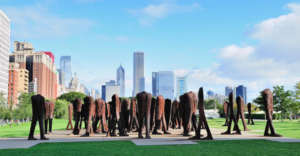
There are plenty of free and low-cost entertainment options in Chicago, but some activities can get expensive. Here’s a breakdown of the average cost of some popular activities:
-
- Art Institute of Chicago: $25
- Chicago Cubs Baseball Game: $30
- Chicago Symphony Orchestra: $50
Chicago’s Climate

Chicago has a continental climate, which means it experiences four distinct seasons throughout the year. Summers in Chicago can be hot and humid, with temperatures often reaching into the 90s Fahrenheit (30s Celsius). Chicago winters can be quite cold, with temperatures frequently dropping below freezing and significant snowfall. In fact, Chicago is known for its harsh winters, with strong winds and lake-effect snow that can make for challenging travel conditions.
Spring and fall in Chicago are generally mild, with comfortable temperatures and colorful foliage. However, these seasons can also bring unpredictable weather, with sudden temperature changes and occasional severe storms.
When planning a move to Chicago, it’s important to consider the climate and prepare accordingly. In the summer, it’s important to stay hydrated and avoid prolonged exposure to the sun. In the winter, it’s important to bundle up in warm clothing and be prepared for potentially hazardous weather conditions.
Despite its challenging climate at times, Chicago is a city that offers a wide range of activities and attractions year-round. From ice skating in the winter to strolling along the lakefront in the summer, there’s always something to do in the Windy City, no matter the weather.
Education

Education is a significant aspect of city life in Chicago, with a variety of options available to students of all ages.
Chicago Public Schools (CPS) is the third-largest school district in the United States, with over 600 schools serving more than 350,000 students. CPS offers a diverse range of educational programs, including traditional neighborhood schools, charter schools, and selective enrollment schools. Selective enrollment schools are highly sought after and require students to meet certain academic requirements to be admitted.
Chicago private schools are also available, including religious schools, independent schools, and international schools. These schools often offer smaller class sizes and specialized programs, such as language immersion and STEM (science, technology, engineering, and math) education.
For students pursuing higher education, Chicago is home to some of the best universities and colleges in the country. The University of Chicago, Northwestern University, and the University of Illinois at Chicago are just a few examples of the many institutions of higher learning located in the city. Additionally, there are numerous community colleges and technical schools that offer vocational and career training programs.
In addition to traditional educational opportunities, Chicago is also home to many cultural institutions that provide educational experiences. The Art Institute of Chicago, the Field Museum, and the Museum of Science and Industry are just a few examples of the many museums and cultural centers in the city.
Overall, Chicago offers a diverse range of educational opportunities for students of all ages and interests. Whether you’re pursuing a degree or seeking specialized training, there are plenty of options available in this vibrant and dynamic city.
Entertainment and Recreation

Chicago is known for its vibrant entertainment and recreational scene, with something to offer for everyone. Here are some of the top entertainment and recreational activities to enjoy in the Windy City:
Music and Theater:
Chicago has a rich history in music and theater, with numerous venues throughout the city showcasing everything from jazz and blues to Broadway productions. Some of the top venues include historic theaters like Chicago Theatre, the Goodman Theatre, and the legendary blues club, Buddy Guy’s Legends.
Sports:
Chicago is a professional sports leagues lover’s paradise, with professional teams in baseball, football, basketball, and hockey. Catch a game at Wrigley Field or Soldier Field, home to the Cubs and Bears, respectively. For basketball fans, the United Center is home to the Chicago Bulls and the Chicago Blackhawks hockey team.
Museums:
Chicago is home to a number of world-renowned museums, including the Art Institute of Chicago, the Field Museum, and the Museum of Science and Industry. These museums offer a variety of exhibits and programs, and are a great way to spend a day with family and friends.
Parks and Beaches:
Chicago has a number of beautiful parks and beaches, perfect for outdoor recreation and relaxation like beach volleyball and outdoor movies. Lincoln Park is the city’s largest park and includes a zoo, conservatory, and several lakeside beaches. Millennium Park is another popular spot, featuring public art installations, an outdoor concert venue, and a skating rink in the harsh Chicago winters.
Food and Drink:
Chicago is known for its diverse culinary scene, with everything from deep-dish pizza, gourmet hot dogs, Italian beef sandwiches, and a thriving craft beer scene. Foodies will love exploring the city’s many restaurants and bars, from Michelin-starred fine dining to local dives.
Retirement in Chicago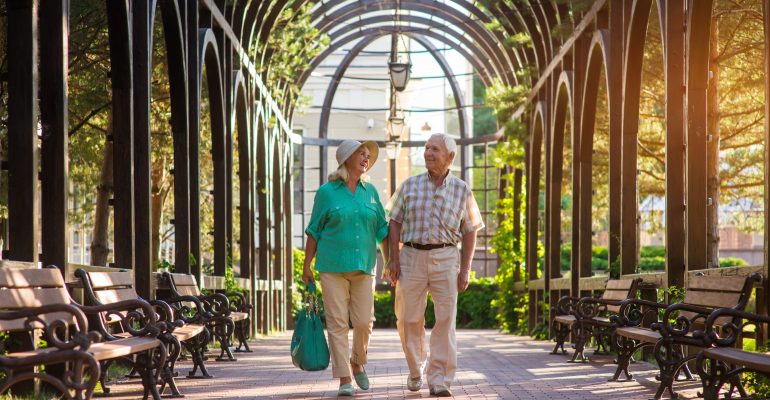
Chicago can be an excellent destination for retirees who want to stay active and engaged in their golden years. The city boasts a wide variety of cultural attractions, including museums, art galleries, and theaters, as well as numerous parks and recreational areas. Retirees can take advantage of the city’s extensive public transportation system, which makes it easy to explore all that Chicago has to offer.
In addition, Chicago has a thriving senior citizen community, with numerous programs and services designed specifically for older adults. The city’s senior centers offer a wide range of activities and classes, including fitness programs, art classes, and computer workshops, providing ample opportunities for retirees to stay connected and engaged with their peers.

Conclusion
In conclusion, moving to Chicago can be a thrilling and rewarding experience. It’s a city with a rich history, vibrant culture, and endless opportunities. To make the most out of your move, it’s important to plan ahead, research the city, and get to know its different neighborhoods. From the amazing food to the attractions to the people, Chicago is a city that will capture your heart and keep you coming back for more.
If you have any further questions about moving to Chicago, feel free to reach out to local resources such as the Chicago Department of Housing, the Chicago Transit Authority, Chicago Homes and Lifestyles or local community groups. With the right preparation and mindset, your move to Chicago can be a great success.

